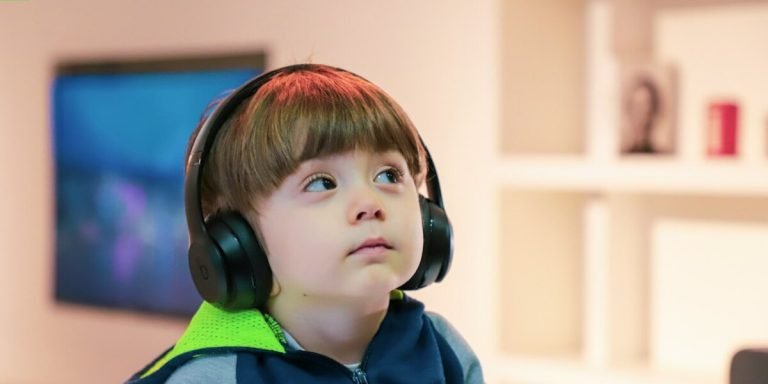Sensory Processing Disorder vs Autism: Key Differences and Similarities Explained
Unraveling the complexities of childhood disorders has become an essential aspect for parents and educators alike. With myriad terminologies, it is crucial to distinguish specifically between “sensory processing disorder vs autism”. Both these conditions showcase unique manifestations but often get intertwined due to some overlapping symptoms.
This blog aims at dissecting and explaining these two distinct yet occasionally interrelated developmental issues – Sensory Processing Disorder (SPD) and Autism Spectrum Disorder (ASD). Armed with this information in your special education resource bank, you’ll be better equipped to support affected children on their learning journeys. Understanding key differences will also help differentiate specific behaviors associated with each condition, leading towards a more tailored approach in remedial interventions.
Did you know?
Did you know that almost 90% of children with Autism Spectrum Disorder (ASD) are found to have sensory processing issues, though not all kids with Sensory Processing Disorder (SPD) have autism which signifies the interconnected yet distinct nature of these two conditions?
Understanding Sensory Processing Disorder and Autism
Understanding the lines of divergence between Sensory Processing Disorder (SPD) and Autism holds great significance, especially in today’s era where inclusive education is gaining momentum. SPD and Autism maybe conjoined at certain points but are distinctly different developmental disorders. Key to such understanding lies not only in recognizing their differences but also being aware of how they interrelate with each other.
In essence, while autism pertains mainly to issues related to social interaction coupled with behavioral peculiarities, sensory processing disorder centers around an individual’s ability or inability for that matter –to respond effectively to external stimuli captured by our senses: sight, sound touch among others. In many cases children could have both these conditions simultaneously which often blurs the separating line leading it into cascading misdiagnoses making early intervention challenging.
Moreover there has been a remarkable leap forward when it comes down technology aiding special-needs kids catering specifically those diagnosed either with autism or sensory processing disorder both inside and outside classrooms setting thus bridging gaps prevalent traditional learning methods couldn’t breach hitherto notably enhancing quality life leading them towards more independence preparing path smoother transition into adulthood thereby cementing foundation for lifelong success.
Defining Sensory Processing Disorder: Characteristics and Challenges
Sensory Processing Disorder (SPD) is a complex and unique condition that affects how children perceive stimuli from their environment. Often, it’s confused with Autism Spectrum Disorder (ASD), leading to misunderstood behaviors and incorrect interventions. Using the keyword “sensory processing disorder vs autism”, we’ll unravel what makes them distinct yet potentially overlapping conditions.
To define SPD, imagine if routine sensations like clothes against your skin or background noise were overwhelming or even painful – this is everyday life for children suffering from Sensory Processing Disorder. It’s not about intelligence or lack of discipline; these kids’ brains are just wired differently.
While similarities between SPD and ASD exist—trouble socializing due to sensitivity extremes—the two aren’t synonymous by any means: Not all individuals diagnosed with Autism experience such sensory overload nor do all having SPD meet criteria for Autism diagnosis which refutes the common belief about “sensory processing disorder vs autism”.
Autism Spectrum Disorder Explained: Signs and Symptoms
Autism Spectrum Disorder (ASD) refers to a broad range of conditions characterized by challenges with social skills, repetitive behaviors, speech and nonverbal communication. Information from various researches suggest that autism may stem from genetic disorders or change in brain structure before birth.
When discussing Autism versus sensory processing disorder (SPD), it’s important to note that these are two separate entities. While they share similarities in their symptoms like sensitivity towards certain sounds or textures, SPD is more about the difficulty in receiving and responding to information through our senses while ASD encompasses broader issues related not just towards senses but also behavior patterns and social interactions.
Children with autism spectrum disorder might show symptoms such as fixation on particular topics, obsessive interests, hand-flapping; body-rocking; intense reactions over minor changes; outbursts of anger or sometimes even self-injury. They find it difficult understanding emotions – both others’ feelings and expressing themselves too- leading them feeling misunderstood often causing stressors at academic environments requiring group workshare initiatives amplified due digital learning spaces prioritizing collaborations nowadays.
Strategies for Supporting Children with SPD and ASD in Educational Settings
Supporting children diagnosed with Sensory Processing Disorder (SPD) and Autism Spectrum Disorder (ASD) in educational environments poses a complex set of challenges. However, the advent of technology integration offers an innovative approach that can greatly improve their learning experience.
Children with SPD and ASD often struggle to process sensory information from the world around them effectively. As such, traditional primarily auditory-visual instructional methods might not be sufficient for these youngsters’ specific needs. Leveraging advancements in education technology could pave way for custom-tailored strategies accommodating unique learning styles associated with both conditions.
The usage of Assistive Technology devices or software tailored towards special-needs learners has been gaining traction recently. These tools are specifically designed to help students overcome some inherent limitations typical to disorders like SPD and ASD; facilitating communication, improving cognitive function, increasing interaction capabilities etc., thus ensuring they remain engaged during lessons without being overwhelmed by multisensory input.
Additionally integrating Virtual Reality into classrooms can foster considerable advantages especially when catering for young individuals grappling SPD/ASD impairment manifestations – offering customizable scenarios which stimulate only relevant senses at adjustable intensities suiting each child’s tolerance thresholds helps maintain focus without causing discomfort/distress.
Furthermore pioneering adaptive technologies also propose interactive games promoting hand-eye coordination skills development besides supporting emotional regulation via biofeedback mechanisms – all whilst delivering curriculum content engagingly on same platform thereby inducing positive associations towards schooling among this demographic encouraging academic progress constructively despite prevalent neurodiversity obstacles facing mainstream pedagogical approaches currently adopted universally.
Tailoring Learning Environments to Meet Sensory Needs
Navigating the world of sensory processing disorder (SPD) and autism spectrum disorder (ASD) involves understanding a child’s unique needs, especially within an educational setting. It is essential to tailor learning environments for these children because they process information differently due to SPD vs Autism.
Learning resources can leverage technology integration in special education. Educational institutions have begun shifting their approach from uniform curriculums to more personalized ones that incorporate different types of digital tools tailored for individual needs. This move becomes even more crucial when it comes to supporting children with SPD or ASD who may require specific adjustments.
The first element is creating a calm environment where students feel safe and less overstimulated as overcrowded classrooms full of colors, noises, and textures might be too overwhelming for them. Incorporate noise-canceling headphones equipped with calming audio tracks or apps could make lessons far more accessible—while also promoting concentration skills.
Further still, assistive technologies designed specifically around sensory challenges such as interactive software programs which allow visual learners better comprehend complex mathematical concepts by transforming equations into engaging graphical puzzles are perfect examples how we are sculpting digital solutions catering directly towards necessities raised due its presence of either Spectrum conditions.
Communication Techniques for Enhancing Classroom Inclusion
Parents and educators often encounter challenges when working with children who have Sensory Processing Disorder (SPD) or Autism Spectrum Disorder (ASD). Understanding the nuances between sensory processing disorder vs autism is crucial to employ effective strategies for supporting these exceptional learners. Ensuring an inclusive classroom environment that caters to their unique needs can be made easier through technological integration in education.
becomes a vital subsection under this broader conversation, focusing on how we approach communication within our classrooms and learning spaces.
Incorporating software such as speech-to-text tools could facilitate better engagement amongst students with ASD, enabling them to share thoughts without overwhelming verbal interactions. These programs not only transcribe spoken words into written text but also offer visual aids like word prediction, which further reinforces language learning by modeling correct sentence structure and grammar usage.
Another key element involves using augmentative alternative communication (AAC) technology. From basic symbol boards to sophisticated computer-based systems, AAC offers SPD affected kids channels of expressing themselves without reliance on oral speech alone—improving both comprehension and interaction skills significantly.
Navigating Resources for Parents and Educators of Children with SPD or ASD
In the digitally-driven world of 2023, technology integration in education has emerged as a powerful tool that can greatly benefit parents and educators involved with children with Sensory Processing Disorder (SPD) or Autism Spectrum Disorders (ASD). As we delve into this era where technology influences every aspect of our lives, it’s crucial to acknowledge its significant contribution towards transforming special education resources.
For parents and teachers tending to kids with SPD or ASD, an array of innovative technological tools can offer immense support. For instance, assistive technologies such as speech-to-text apps have made teaching easier by providing alternate ways for these children to communicate. These programs not only supplement traditional therapies but also fortify early intervention strategies at home and school settings alike.
Moreover, online platforms equipped with evidence-based training modules serve as valuable resources for both parents and educators engaged in managing sensory processing disorders or autism spectrum disorder. The accessibility allows learning from experts across the globe about effective techniques that help promote inclusivity while addressing individual needs efficiently. Therefore allowing caregivers and teachers an opportunity to customize their approach according to each child’s unique requirements.
Remembering though that no single method is universally applicable when dealing with SPD or ASD, integrating technology furthers our ability tremendously through personalized solutions based on comprehensive analysis which weren’t feasible before due advancements like Artificial Intelligence(AI).
Technology indeed plays a profound role in shaping how we navigate related resources beneficially; thus making us better equipped than ever before in tackling challenges associated within educational scenario concerning SPD & ASD!
Essential Tools and Therapies for Managing Daily Activities
In addressing the particular needs of children with Sensory Processing Disorder (SPD) or Autism Spectrum Disorder(ASD), there are many techniques, tools, and therapies that can significantly improve their daily life. Understanding sensory processing disorder vs autism is crucial in navigating resources for parents and educators.
Sensory integration therapy often involves occupational therapists who guide children through playful activities designed to challenge their ability to respond appropriately to sensory input. A common tool used in this type of therapy includes swings which allow kids self-regulate by controlling how fast or slow they want it to go thus helping them learn body awareness.
Weighted vests can also be beneficial as these apply gentle pressure providing a calming effect while improving focus during tasks. Similarly, exercise balls have been found effective not just for physical workouts but even inside classrooms where sitting on these help regulate restlessness among SPD or ASD learners making learning better integrated into their daily routine.
Advocacy Groups and Networks: A Guide to Community Support
In the world of special education, two common conditions that often present similar symptoms but require uniquely tailored educational approaches are Sensory Processing Disorder (SPD) and Autism Spectrum Disorder (ASD). As a parent or educator, you might find yourself in need of resources to help understand these disorders better. Given the growing use of technology in 2023’s educational landscape, we can leverage it to ease this process.
The internet has created an avenue for various advocacy groups and networks devoted to supporting families affected by SPD or ASD. Such platforms offer numerous benefits including information dissemination on sensory processing disorder vs autism, support initiatives and community building activities amongst parents & educators alike.
Organizations such as “The Star Institute” for SPD provide valuable insights into understanding how children with SPD perceive their world differently due to differences in handling everyday sensory information. They also outline strategies both parents and teachers can deploy towards creating an enabling environment at home and school respectively.
Conclusion
In summing up the complex topic of sensory processing disorder vs autism, it’s clear that while both can present unique challenges and struggles for children, they are also distinctly different in many ways. Understanding these variations is vital not only for addressing the specific needs of our kids but also to dispel myths around each condition.
Knowledge ultimately provides us with tools as parents or educators, which help foster a supportive environment where every child has an opportunity to thrive. The journey doesn’t need to be traversed alone; explore more on our website for comprehensive information on childhood education and various forms of support available at your disposal. Let’s continue learning together because growth isn’t just about reaching milestones; it’s understanding the road we’re navigating too!







